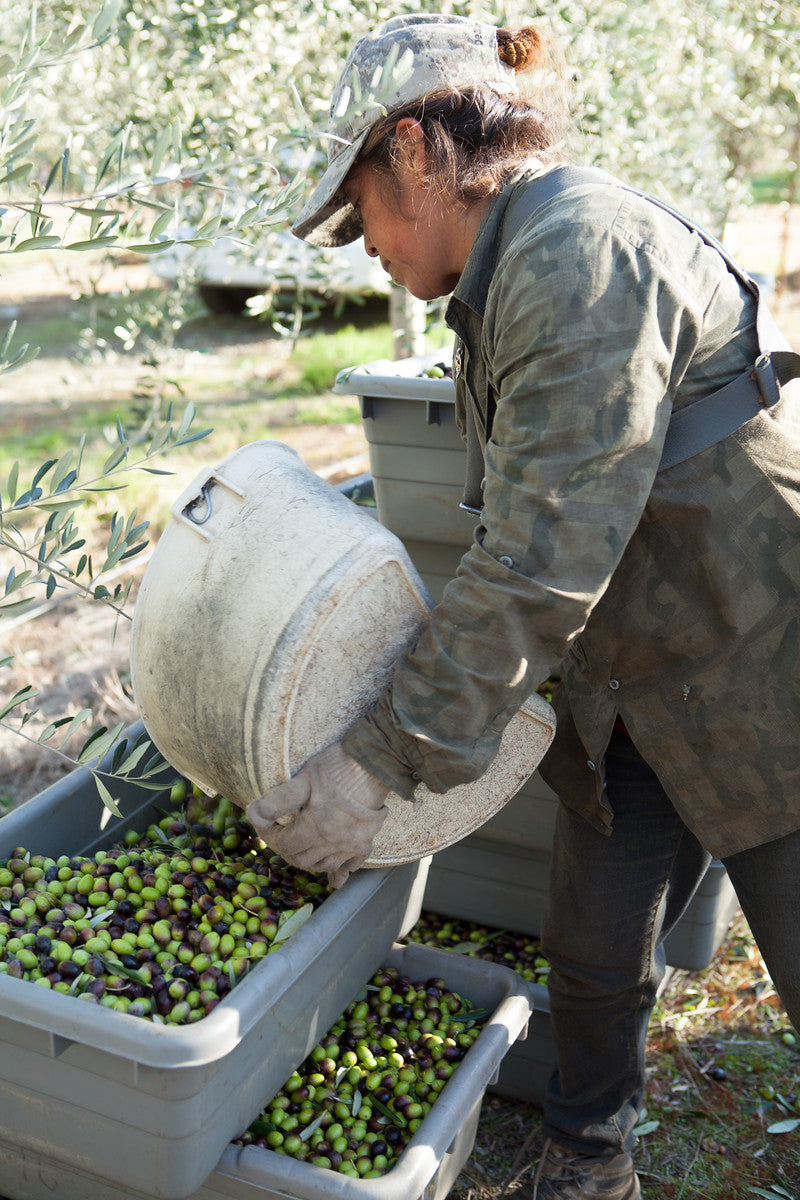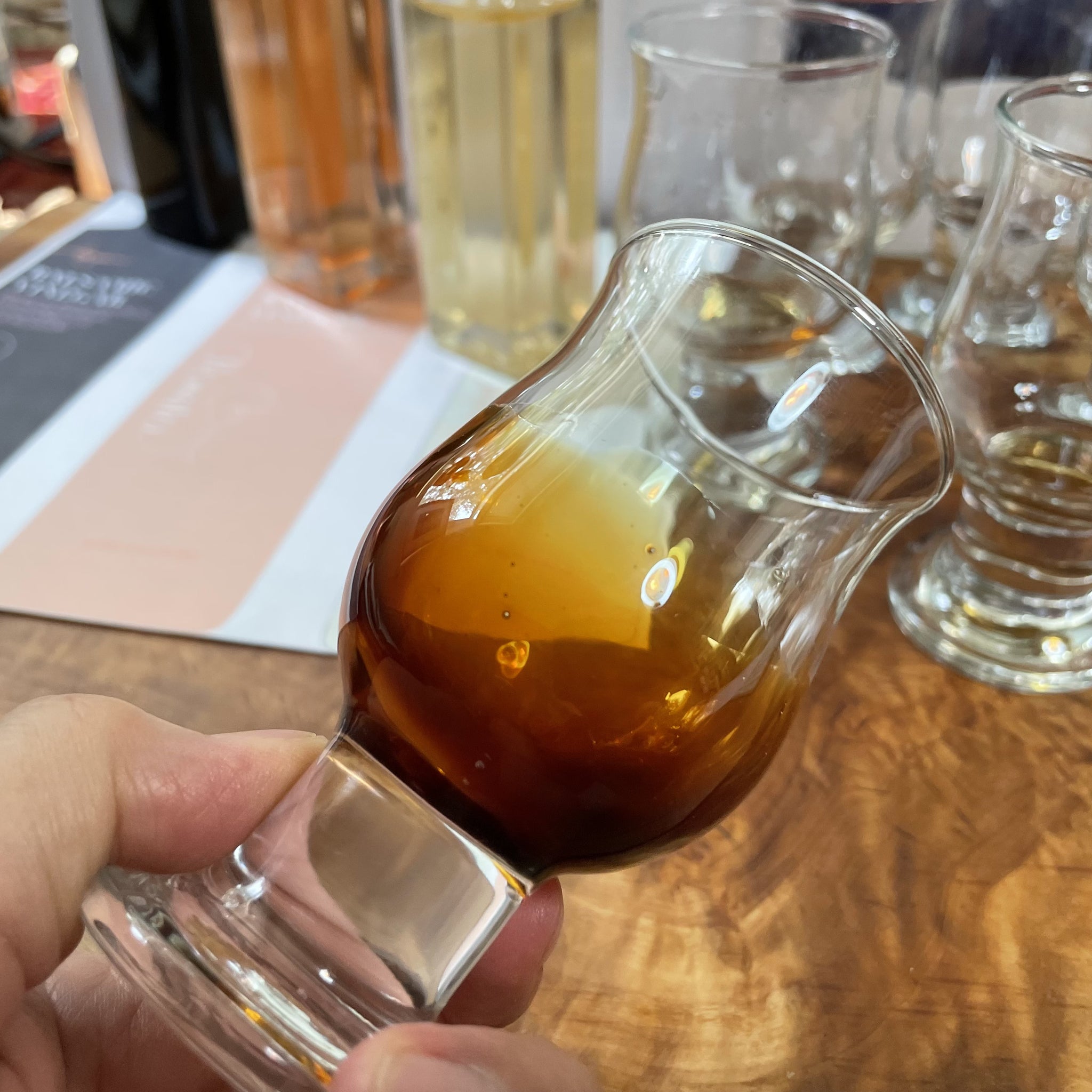
Olive Oil Harvest: A Farmer's Perspective
May and June have been exceptionally hot in the Sacramento Valley for this time of year—111 ºF to 113 ºF some days. After a few such days in a row, the swelter makes one long for harvest time with its cold pre-dawn mornings and cool, clear days. Follow me while I take you there!
November 14, Corning, California.
It's oh-dark-hundred and biting cold.
Although sunrise is not until 6:39 AM in early November, astronomical twilight begins more than an hour earlier at 5:20 AM. I’m driving west to unlock the big double farm gates.
Hand harvesting olives is hard work and takes many hands, so each year independent agricultural workers find their way to licensed farm labor contractors (FLCs) who help us bring in the crop. Although it is just after 5:00 AM and still dark, 7 cars are idling on the narrow country road waiting for my arrival. I swing open and secure the gates, watching the cars file past, deftly parking between the rows of yesterday’s harvested trees, and then I follow closely behind them. We wait in the leafy dark for the supervisor and other workers to arrive. Contract farm laborers are paid by the pound, so these men and women are eager to get started.
Soon, others arrive—mostly in older, shared vehicles—many with well-worn gloves and their own picking buckets slung from shoulders. All are bundled in various combinations of hoodies, sweaters, vests, and jackets over their work shirts; although very cold now, they’re ready to shed layers as the day warms.
The supervisor approaches me to confirm the day’s project (finish the Coratina; start the Picual) and lets me know how many workers he’s expecting today—40, then adds, “maybe 60, Señora Liz”.
“…but probably 35,” I think to myself. Farm labor is hard to come by, and that situation is not looking as if it will improve for farmers.
There are ten different olive varieties in this orchard; each one ripens a bit differently and each one has a signature flavor profile for our brand. A good example is the Taggiasca, which is harvested ripe and buttery in its native Liguria, however, is taken green and grassy for our purposes. Today’s Coratina and Picual are both harvested in a mostly green style, and it’s good that they’re planted side by side; 36 rows of Picual and 34 rows of Coratina totaling over 7,300 trees in all. We expect that there are only 4 tons of Coratina left to harvest, and the workers can easily move to the next section without having to walk too far with the ladders or re-load the trucks and trek to the opposite side of the property, which is sometimes the case.
The trucks bearing the FLC’s orchard ladders arrive, and workers wordlessly hoist and walk them into position in the half-light. It’s 5:30 AM, and the day’s hand harvest has begun. I’ll stay until just past sunrise, then drive east to the other orchard.
In the meantime, the sight and sound of these ubiquitous 12’ aluminum ladders define Corning during harvest. It starts with the table olive harvest a month or more earlier, harvesting very green Sevillano and Manzanillo olives for the local cannery. There is a music to it; the creak and clatter of the ladders, the hollow PONK, ponkponkponk, PONK of olives dropping into the buckets, and the occasional holler or burst of song. I love it and enjoy walking in its midst.
Workers—typically wearing thin cotton gloves—pull olives off the branches toward themselves and into their buckets a branch (or two) at a time. Once the bucket is full, it's tipped into a grey plastic “caja,” a box which holds 25 pounds of olives. They stack their boxes, first one way, then the other, balancing on the edges so the fruit is not bruised, carefully marking their payroll cards as they work and tucking them into the top box. The supervisor watches the rate at which the stacks grow and calls for the truck with the bin carrier when it looks as if there are enough to fill 4 half-ton fruit bins. He verifies each employee’s stack by initialing their timecard, then dumps the cajas in the larger bin. The workers keep filling buckets and cajas, making new stacks, and the truck with the bin carrier departs for our olive mill 12 minutes to the south. With enough crew, they can deliver 2 tons every 30 to 60 minutes, and keep the mill running continuously with freshly harvested fruit.
While we were sleeping, a team of five spent the night harvesting the other orchard, and today they’ll be working until 9:00 AM. Arbequina is a tiny olive, about the size of a small blueberry, and there are 135,000 trees to harvest in an impressive 10 days. We use an imposing mechanical harvester which stands over 14’ high and is 21’ long. One operator and an assistant drive at 3 to 5 mph over rows of densely planted olive trees which have been pruned into a hedge, a bit like what you might see in a vineyard or tea plantation, but taller. Inside, 36 vibrating arms come into direct contact with the olive tree canopy knocking the fruit into a conveyor and disgorging it into a tractor-drawn gondola in the next row. It’s loud, and it happens fast.
The two gondola teams follow the harvester, one trailing the other, so that the big machine only stops for operator breaks. Once a gondola is full, the operator “speeds off” (okay, maybe 10-12 MPH) to dump his load into one of the 10-ton carriers—a larger scale version of cajas (grey boxes) filling the fruit bins. This team and others harvest in 12 hour shifts and deliver 20 tons of olives per load for immediate milling. They only harvest when the day is cool and never if the trees are wet—we can share more about that when we visit the mill together in a future letter from the orchard.
Photos by Angie Norwood Browne courtesy of Lucero Olive Oil
This article first appeared in OliveOil.com, 15 June 2021





